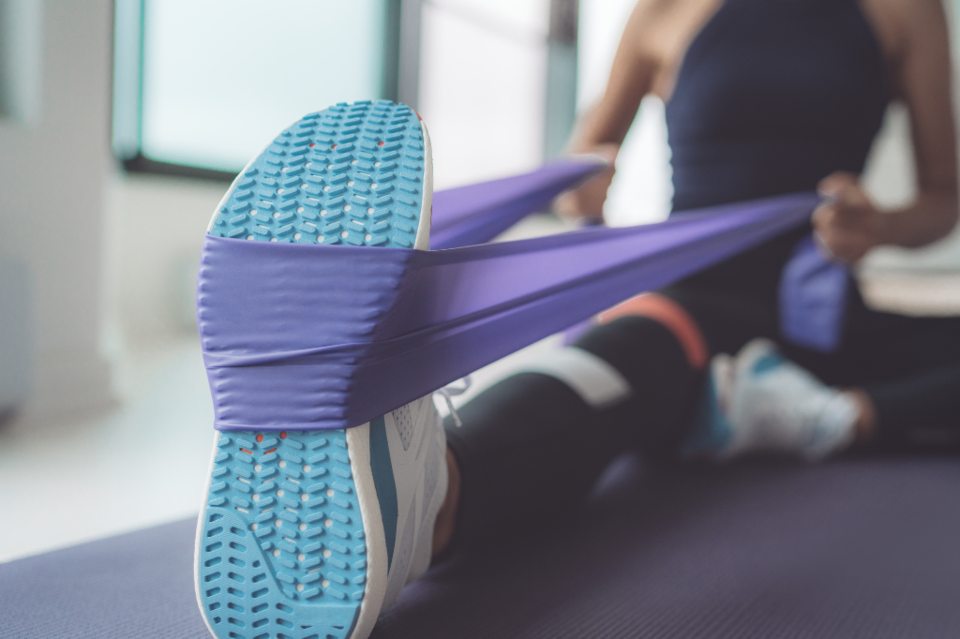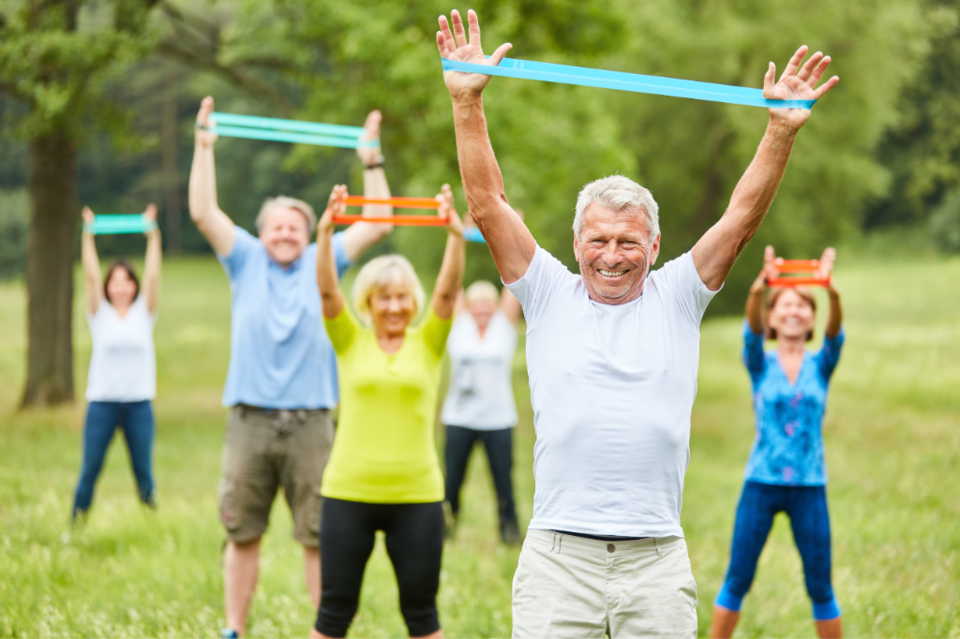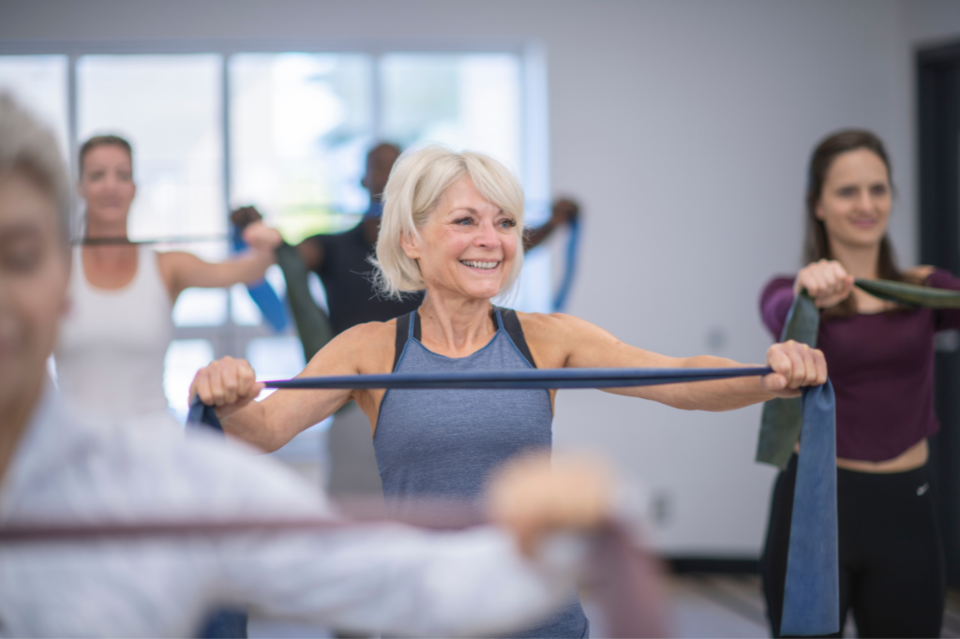Strength training is an integral part of staying healthy at any age but especially after 50.
Traditional weights can put stress on your joints, however, and it’s often unrealistic to own a complete set of free weights at home. Fortunately, there’s an alternative tool that allows you to build strength and flexibility right at home without placing additional strain on your joints – resistance bands! Here’s everything you need to know to get started with this must-have workout equipment.
What are Resistance Bands?
Resistance bands, sometimes called exercise bands, stretch bands, or fitness bands, are loops of rubber (with or without handles) used in strength training. The bands come in various styles and resistance levels so that you can change your needs as you progress through workouts. Resistance bands can help you build flexibility and range of motion alongside muscle strength.

The Benefits of Bands
There’s a reason why many fitness experts recommend exercise bands as one of the top items of gear for everyone, including seniors! Although these bands are small, they add a lot to your routine; their portability and small profile are the first benefits – you don’t need a dedicated exercise room to use them, and you can carry them along to a fitness class or on vacation! Another benefit? Because they’re fairly simple, resistance bands are inexpensive and easy to purchase from various stores.
Unlike traditional weights, bands can help you improve your range of motion by providing tension during stretches and strength training, and they don’t add stress to your joints. Lastly, exercise bands are a great workout tool because they always force your muscles and brain to engage in slightly different ways. They never pull in quite the same direction or with quite the same force, so your whole body stays engaged and energized during the entire workout.

Which Bands to Buy
There are many kinds of resistance bands, so if it’s your first time buying this workout equipment, it’s always best to consult a professional. However, if you’re buying on your own, remember to start slow – you can always increase the difficulty, but you don’t want to hurt yourself by doing too much too soon. Resistance bands come in various styles: thin bands with handles, loop bands (that look like giant rubber bands), therapy bands, etc.
Each style then comes in various resistance levels; a basic rule of thumb is that a thicker band has a higher resistance, so opt for thinner versions if you’re just starting. It’s also a good idea to have several different bands for different uses: arm workouts and moves that require a lot of big motions will use bands with lower resistance, while leg workouts and small-motion movements can handle higher resistance. The good news? Most bands will indicate their resistance level to make purchasing and using very straightforward.
Photo: FatCamera via gettyimages.com
Seated Exercises
If you’re just starting with exercise bands, try these beginning seated exercises; start with a light resistance band, and then increase the band resistance once you feel ready. The first set of exercises are for your arms and chest, so make sure to complete a warm-up to get your body moving. After going through the chest press and lateral raise, you’ll find that you’re getting both a strength and flexibility workout! The resistance bands make it possible to stay seated while providing tension for your arms. Next, move to your legs (and be sure to warm them up!). You’ll find that the lateral moves really target your legs and hips, while the leg press is a great way to strengthen your ankles for added daily movement stability.
Standing Exercises
If you feel stable completing standing exercises, try these three resistance band moves to improve your strength and flexibility and challenge yourself beyond the seated exercises. As with all activities, make sure to start slow and increase the difficulty only as you’re ready. To improve your posture and upper-body strength, scapular retraction is important. The scissor toe taps target your hip flexibility and strength, both key to maintaining core strength as you age.
Finally, the lateral crab walk is designed to improve balance and strength in your leg muscles.
If you’re looking for a low-cost, accessible, and flexible way to add more strength training to your routine, there’s no better tool than resistance bands!




